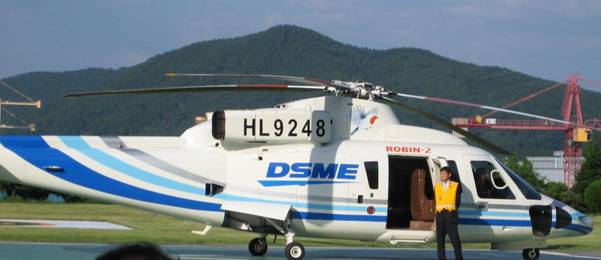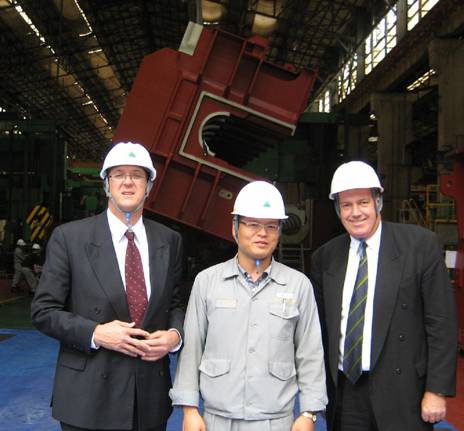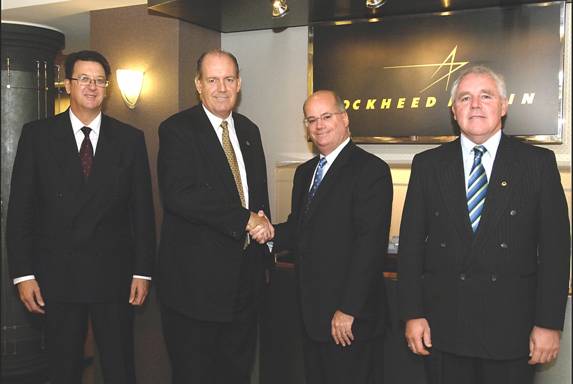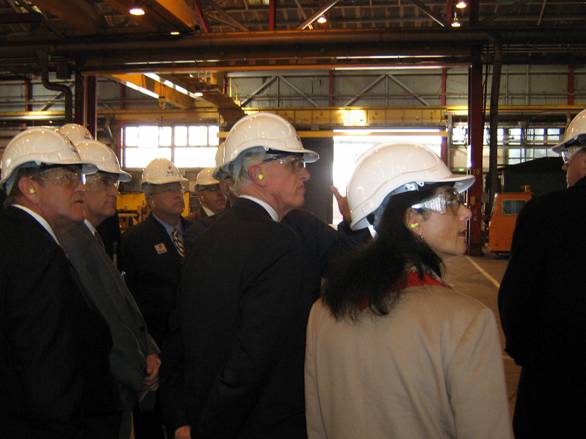Chapter 1 - Introduction and conduct of the inquiry
Referral of the inquiry
1.1
On 10 November 2005, the Senate referred the matter of Australia's naval
shipbuilding and repair industry to the Senate Foreign Affairs, Defence and
Trade References Committee for inquiry and report by the last sitting day of
2006. On 11 September 2006, the Senate committee system was restructured
and the newly constituted Senate Standing Committee on Foreign Affairs, Defence
and Trade assumed responsibility for the inquiry with the same terms of
reference and tabling date.[1]
Terms of reference
1.2
The terms of reference focus on the future of Australia's naval
shipbuilding and repair industry, its capacity, its economic viability, and the
broader economic implications stemming from the construction of large naval
vessels in Australia. The terms of reference required the committee to inquire
into and report upon the scope and opportunity for naval shipbuilding in Australia
and in particular:
- the capacity of the Australian industrial base to construct large Naval
vessels over the long term and on a sustainable basis;
- the comparative economic productivity of the Australian shipbuilding
industrial base and associated activity with other shipbuilding nations;
- the comparative economic costs of maintaining, repairing and refitting
large naval vessels throughout their useful lives when constructed in Australia
vice overseas;
- the broader economic development and associated benefits accrued from
undertaking the construction of large naval vessels.
1.3
The committee's terms of reference focus on 'large naval vessels'.
Although witnesses gave varying definitions of a large vessel, for the purposes
of this inquiry, the committee was guided by Defence's classification:
...a 'large naval vessel' is something above a patrol boat and
hydrographic ship size and includes frigates, destroyers, tankers, afloat
support ships and amphibious ships.[2]
1.4
In addressing the terms of reference, the committee also took account of
the growing sophistication and complexity of modern warships and included
minesweepers and submarines in its consideration.
Conduct of the inquiry
1.5
The committee sought views from a range of people interested in the
future of Australia's naval shipbuilding and repair industry. In particular, it
wrote to, and invited, submissions from shipbuilders, suppliers, unions,
professional associations and individuals engaged in the shipbuilding industry
such as engineers and architects as well as academics including economists. It
also sought contributions from state governments and relevant Commonwealth
government departments.
1.6
The committee advertised the terms of reference and called for
submissions in The Australian on numerous occasions leading up to
the close of submissions in mid-February 2006.
1.7
Two-thirds of the way through the inquiry, the committee published a discussion
paper, which identified the main themes emerging from the evidence. It released
this paper to stimulate debate in areas where evidence before the committee was
sketchy or contradictory or where it needed clarification in order to formulate
recommendations. The committee invited submitters and witnesses to respond to
the issues raised. A summary of this paper, together with the main discussion
points, is at Appendix 6.
Submissions
1.8
The committee received and published 41 submissions which are listed at
Appendix 1. The Department of Defence lodged its submission on 24 March
2006 just days before it was to give evidence before the committee on 28 March.
The committee voiced its disappointment with the Department for what it deemed
to be an inadequate coverage of the terms of reference.
1.9
This dissatisfaction was compounded when only one departmental officer
appeared at the public hearing to represent Defence. The committee was expecting
to hear from a team of senior experts drawn from Defence and DMO officers who
had detailed and specific knowledge of particular naval acquisition programs
and recent hands-on experience with various key projects. It was also seeking
evidence from experienced officers who had a thorough understanding of
industry's capability across all aspects of naval shipbuilding, specialists in
relevant economic analysis and modelling, and high-ranking personnel with the
knowledge to speak authoritatively on broader issues. These issues included Defence's
strategic priorities, its procurement policies and practices and other matters
far too numerous to mention here. Clearly no one person could have met these
requirements.
1.10
To obtain information from Defence, the committee, on the following day,
forwarded to the Department a list of 62 written questions on notice. It should
be noted that Defence's response was comprehensive and greatly assisted the
committee in conducting its inquiry. Furthermore, at its second appearance
before the committee, a team of defence specialists led by Dr Stephen Gumley,
Chief Executive Officer, Defence Materiel Organisation, and Lieutenant General
David Hurley, Chief, Capability Development Group, Department of Defence,
represented Defence.
1.11
The committee had to expend much time and effort in extracting
information from Defence. Even then, it suspects that studies and analysis conducted
by, or for, Defence, that may have been central to its inquiry, were not made
available to it. The committee is particularly concerned about the lack of
information on the comparative costs and productivity of major naval
acquisitions. This matter is discussed in chapters 9 and 10.
Public hearings and site inspections
1.12
The committee held ten public hearings in Canberra, Perth, Adelaide, Melbourne,
Hobart and Sydney. A list of the committee’s public hearings, together with
the names of witnesses who appeared, is at Appendix 3.
1.13
As part of the inquiry process, committee members inspected a number of
Australian shipbuilding sites including Henderson in Western Australia, Osborne
in South Australia, Williamstown in Victoria, the Incat yard in Tasmania and
the Australian Defence Industries (ADI) facility at Garden Island in Sydney. Committee
members found these visits invaluable in gaining an insight into the industry,
how it operates, the challenges it faces and some of the solutions that
industry is putting forward to improve efficiency and competitiveness. The
program for these visits is at Appendix 4.
Overseas delegation
1.14
The committee was particularly interested in the rapid advances in
technology and the shipbuilding industry's response to these changes. It was
very much aware of the influences that global trends and international business
alliances were having on Australian industry. To gain a better understanding of
the industry, the Prime Minister gave his approval for the committee to go on
an extra parliamentary delegation to inspect overseas shipyards.
1.15
In the second half of September 2006, the delegation visited South Korea
and the United States to inspect shipyards and associated sites and to talk to
a range of people involved in the shipbuilding and repair industry. This visit
provided the committee with the opportunity to study first hand the developments
taking place in South Korea and the U.S. It equipped committee members with a
greater appreciation of global developments and trends and helped them
enormously in assessing the evidence before the inquiry and in formulating
recommendations. Indeed, the visit was an integral part of the inquiry process.
1.16
The committee acknowledges the assistance of the Prime Minister and the
Minister for Defence in allowing the committee to undertake the overseas visit.
Committee members appreciated this support.
1.17
The delegation report was tabled in the Senate on 29 November 2006. The program for the delegation visits is at Appendix 5.
Visit to South
Korea

The delegation visited DSME's shipbuilding site
at Okpo Bay, Geoje Island on the southeastern tip of the Korean Peninsula.
Transport to the site was provided in DSME's helicopter, affording a good view
of Okpo bay and the scale of DSME's shipping operation.

The delegation visited Hyundai Heavy Industries'
shipyard at Ulsan and inspected HHI's engine manufacturing plant. An
engine block hangs from the hall roof behind the delegation.
Visit to the United States of America

The delegation with representatives of Lockheed Martin.

The delegation viewed a combat system
demonstration at Raytheon.
Site visit in Australia

The committee visited Tenix's Module Hall at
Williamstown on 27 April 2006. Senator George Campbell (far
left), Senator Russell Trood (centre)
and Senator Concetta Fierravanti-Wells
(right).
Structure of the report
1.18
The report is divided into four broad parts:
Part I—Background to naval shipbuilding—provides
context for the assessment of Australian industry by looking at trends in naval
shipbuilding both overseas and in Australia.
Part II—Australia's capacity to produce
large naval vessels—considers the four main elements of Australia's naval
shipbuilding industry in the context of their capability to build large naval
vessels—the prime shipbuilders, the network of suppliers that make up the
broader industrial base of the naval shipbuilding sector, infrastructure and
workforce.
Part III—Productivity
of the Australian naval shipbuilding and repair industry—examines the
comparative economic productivity of the Australian shipbuilding industrial
base including the comparative economic costs of maintaining, repairing and
refitting large naval vessels throughout their useful lives when constructed in
Australia vice overseas. It also takes account of the broader economic benefits
that accrue from building ships in Australia as well as the role of Australia's
national security in influencing procurement decisions. Having examined Australia's
capacity to produce large naval vessels and the productivity of Australia's
naval shipbuilding and repair industry, the committee concludes Part III with
its main finding on the industry in Australia.
Part IV—The role of
governments—draws together and discusses the major themes that emerged in
the body of the report, with the focus on how governments generally, and
Defence more specifically, can assist the industry become more efficient and
productive.
Acknowledgments
1.19
The committee thanks all those who contributed to the inquiry by making
submissions, providing additional information, hosting site visits or appearing
before it to give evidence.
Part I
Background—developments in the shipbuilding and repair industry overseas
and in Australia
Part I of the report provides the necessary context for
understanding developments in the shipbuilding industry in Australia and the
likely challenges ahead for the industry. Firstly, it looks at overseas trends
and in particular focuses on the shipbuilding industry in the United States and
Europe particularly the United Kingdom. It is concerned with the demand for
naval vessels, advances in technology, changes to the way ships are built, the
skills needed in the construction of a modern naval ship, and the international
market for such ships.
Secondly, it provides an overview of the shipbuilding and
repair industry in Australia, tracing the emergence of the major shipbuilders
in order to explain the current structure of the industry.
Navigation: Previous Page | Contents | Next Page